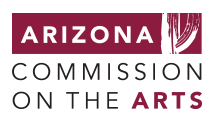In the 2014-2015 school year, the Arizona Department of Education and the Arizona Commission on the Arts collaborated on the pilot project Arts2Go, which proposed a new model for teacher professional development and community arts connection.
Arts2Go delivered interactive, participatory, online learning sessions to a pilot group of 4th – 6th grade teachers, that focused on making connections between Arizona’s arts standards and the new Arizona College and Career Ready English Language Arts standards. Designed and presented by experts in the field from Arizona Opera, Childsplay and the Phoenix Art Museum, each webinar explored how to “read” and respond to works of exemplary art through close, sustained observation.
These webinars are now available below to help teachers and students build their skills in how to closely observe visual art, opera and theatre.
A brief introduction to close reading and the role it plays in enhancing a young learner’s ability to analyze and interpret theatrical performances.
Segment 2: Title Analysis
Title analysis, a pre-show technique, prepares students for a critical viewing of a theatre performance by inviting them to draw inferences about the play and what they expect to see.
Segment 3: Rendering Reflections
How the process of rendering a costume/set design from supplied texts helps to establish potential plots of the play.
Segment 4: Vocal Choices
Tips and techniques on how to engage young listeners in identifying what pacing, pitch, emotions, and subtext have to do with character interpretations.
Segment 5: Popcorn Reflection
Post show technique, known as ‘popcorn reflection,’ helps students derive particular moment, lines, or images from the play that were memorable.
Segment 6: Theatre Review
Student-written theater reviews allow for the student-audience to draw upon evidence from the production to guide them in drawing conclusions and inferences about the play.
Segment 7: Closing Reflection
The last segment is an open dialogue amongst participating arts educators which outlines moments from this seminar deemed particularly helpful.
A brief introduction of the techniques used to engage young audiences in visual art.
Segment 2: eMuseum
An online medium is presented that may be used to help prompt and engage student in the Art Museum experience before it begins.
Segment 3: Exercise 1
An exercise in using nouns, verbs, and adjectives to describe visual arts and the value that time plays in the concept of ‘close-looking.’
Segment 4: Exercise 2
Utilizing words that describe the image that also mimic the basic shapes of an art piece.
Segment 5: Exercise 3
This segment focuses on how students can distill thoughts into one-sentence descriptions as a tool to refine observations and cultivate awareness.
Segment 6: Quick Reflections 1
This section has students create titles for pieces using words or images to help them analyze a particular piece.
Segment 7: Quick Reflections 2
Students are encouraged to notice whether artists do or do not use words (title) to covey meaning in their art.
Segment 8: Compare & Contrast
This final section focuses on the importance of comparing and contrasting images using words, thoughts, and observations (or any of the previous exercises) to see similarities and/or differences.
Segment 9: Closing Reflections
An open discussion that helps arts educators understand how to understand/utilize close reading in an operatic setting (through score, libretto–a literary source, and production).
Segment 2: The Score
This segment utilizes close-reading of the score. Have students listen to a 3-minute segment, noting when the piece has significant chord changes and what emotions each change evokes.
Segment 3: The Story
Participants are separated into groups and encouraged dramatize their own stories based on what they hear (known as ‘Reader’s Theatre’). Such creative leeway allows the audience to notice nuances in classical music that they wouldn’t have heard before.
Segment 4: The Production
The final segment on close-reading, through way of the production, has participants watch two visuals of the opera. Each are asked to note the differences between the stylization of the performances and what each version evoked emotionally.
Segment 5: Closing Reflection
An open discussion amongst participants about what they felt were effective tools from the seminar, and what could perceivably work in their classrooms.




